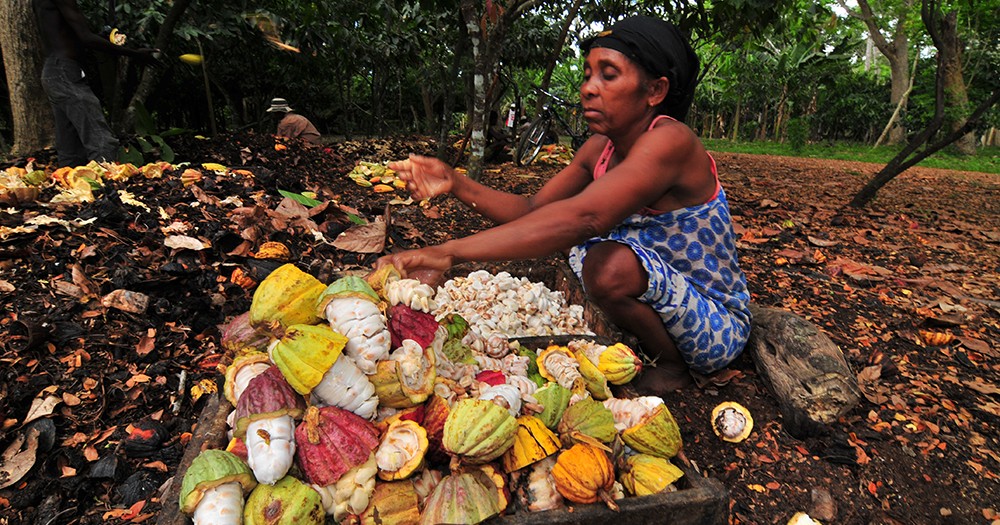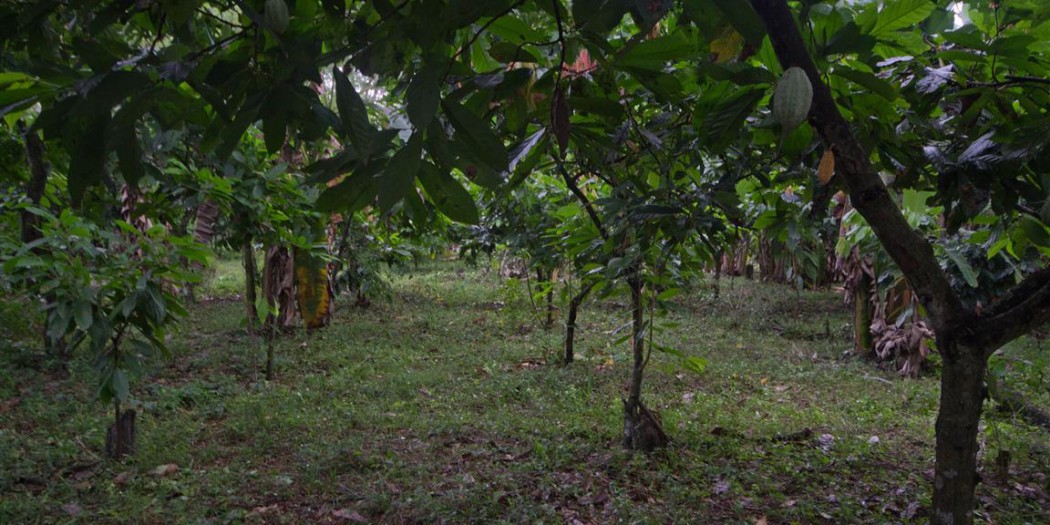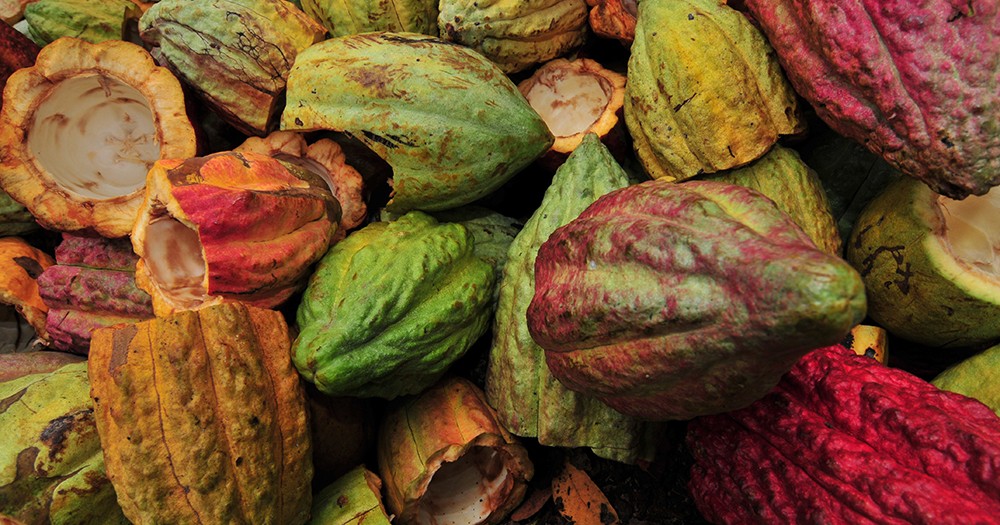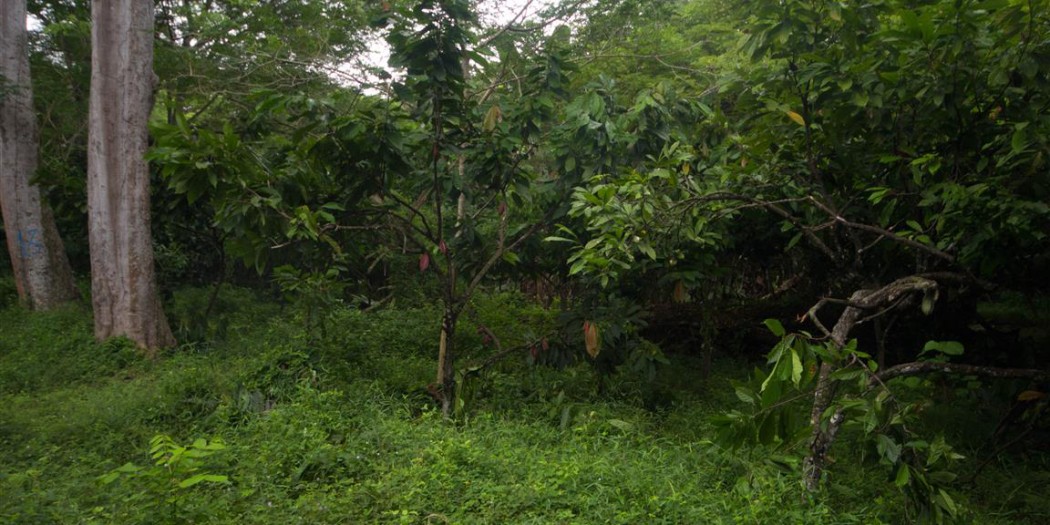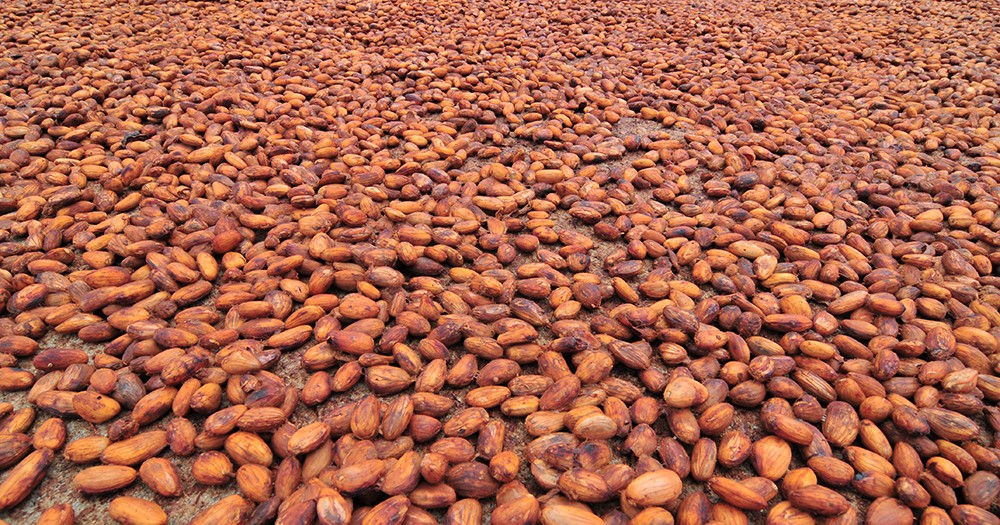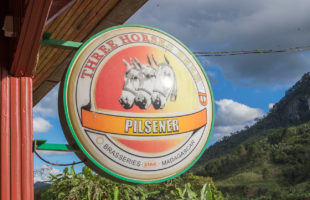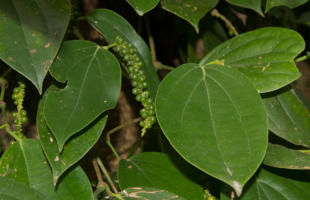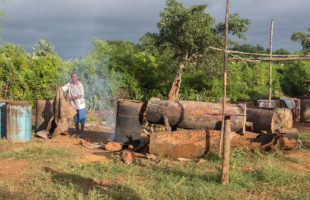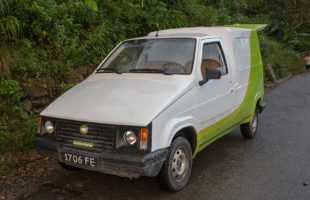Originally, the cocoa plant (Theobroma cacao, meaning „deities‘ dish“) does not come from Madagascar, but from Southern America. Yet the eighth continent offers best preconditions to cultivate cocoa. Today, Madagascan cocoa is considered one of the best available in the world. Accordingly, the harvest is very small: with an average of 3000 tons per year, Madagascar accounts for less than 0.5% of world production (according to IOCC).
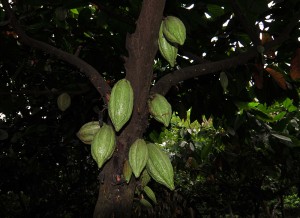
The cocoa tree was introduced to Madagascar by the French colonial masters in the 19th century. The first plantations were established in Ampasimanolotra (French Brickaville). However, the Madagascans soon realized that the northwest of the country was much better suited for growing cocoa. In 1904, Lucien Millot founded the first large cocoa plantation in Andzavibe with plants imported from Java. This is where the key growing area exists still today: Around the city Ambanja on the rivers Sambirano and Ramena. A smaller growing area is not far away on the island of Nosy Be. Cocoa trees, which belong to the mallow family, are evergreen and are pruned to a height of about five metres on Malagasy plantations. Without cutting back, they can reach up to 15 m into the sky. Cocoa trees grow for five years before cocoa beans can be harvested for the first time and reach their highest yield at the age of ten to twelve years. Throughout the year, the trees bear countless, relatively inconspicuous flowers – up to 100,000 per year. Midges pollinate most of them, but only a fraction of the sprouting pods (botanically correct it is actually berries) manage the five to eight months to ripeness. Each tree produces 20 to 30 fruits per year, which contain sweet-tasting white flesh with 25 to 50 cocoa beans, the seeds of the tree, under the hard skin.
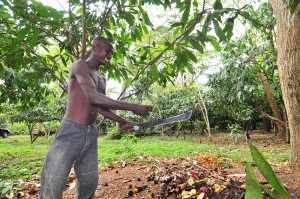
There are two main types of cocoa beans, bulk cocoa and flavour cocoa. Madagascar grows almost exclusively fine cocoa, which sets it apart from other producing countries. Fine cocoa includes the Criollo, a low-yield, sensitive tree whose cocoa beans are highly valued by gourmets because of their noble aroma. There are still some plantations in Madagascar, but the cultivation of this variety accounts for only 10% worldwide. One of the most expensive and supposedly best chocolates in the world, Amedeis Porcelana, is made from a particularly light variant of Criollo. Forastero, the typical consumer cocoa, is the exact opposite: a robust and high-yielding tree that produces less fine, yellow-shelled cocoa beans in return. This bean is responsible for the rather uniform cocoa taste, as most people know it. Forastero is very rare in Madagascar and is mainly cultivated in West Africa. Madagascar’s most widely used cocoa variety is the Trinitario, a cross between the Criollo and Forastero Calabacillo varieties that originated in Trinidad in the 18th century. It should combine the easy cultivation of one variety with the noble taste and high quality of the other.
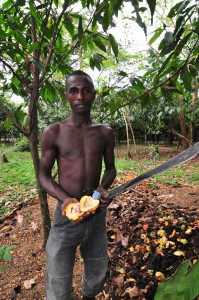
The cocoa harvest takes place twice a year, at the beginning of the rainy and the dry season. The fruits are cut from the tree with large bush knives, opened on the plantation and removed from their shells. The cocoa beans together with the pulp are collected in bags, which are then taken to the factory.
This is where one of the most important parts of production takes place, fermentation: acetic and lactic acid fermentation, which changes the taste of the previously inedible cocoa beans and turns them brown. Fruit pulp and cocoa beans land in large containers covered with banana leaves for a maximum of one week. On the second day the mixture heats up to 40 to 45°C and continues to ferment at this temperature. The course of fermentation is decisive for the later quality of the cocoa, usually a fermentation stage of 90 to 95% is aimed for.
Fermentation is followed in some factories by washing the beans. They are then spread out in the open air for two to three weeks and dried by the sun, reducing the water content from over 60% to less than 7%. The dried cocoa beans now have a much longer shelf life and a more intense aroma. Finally, a certain number of beans per supplier are opened and their quality assessed. Moisture above 7%, more than 7% violet cocoa beans, broken or parasitized beans lower the quality, whereby Superior, Superior washed and Standard are distinguished.
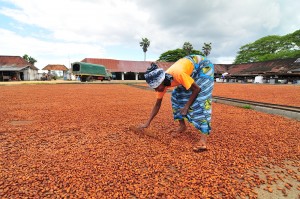
Cocoa beans are generally exported as raw materials from Madagascar; only a few companies produce chocolate and other delicacies (Chocolat Robert, Menakao, Madécasse) directly on the red island. This is due on the one hand to a lack of cooling facilities and equipment and a lack of infrastructure to operate them, and on the other hand to a lack of chocolatier know-how. The cocoa is finally roasted and ground in the chocolate factory at the destination. To ensure that the bitter, sour cocoa flavour evaporates to a certain degree, the finely ground cocoa beans are conched together with cocoa butter for hours – only then does a delicious chocolate result.
Madagascan cocoa is processed as a raw product by many well-known manufacturers in Europe, such as Valrhona (France), Arko or Lindt (Germany). But also smaller, exclusive manufacturers like La Maison Pralus (Roanne, France) or Bonvodou (Berlin, Germany) resort to cocoa from Madagascar, sometimes even with tree-to-bar production.
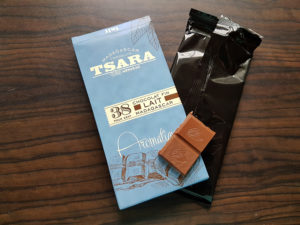
Chocolate made from Malagasy cocoa beans has a typical fruity note with a lot of acidity, which is balanced by correspondingly more sugar in the production of the chocolate. Therefore only a few chocolates made of Malagasy cocoa with over 70% cocoa content can be found. Particularly high-quality and tasty chocolates with particularly good cocoa as a starting product consist only of cocoa mass and sugar, in lighter varieties with added cocoa butter and milk powder. Added flavours should not be included – apart from vanilla – if you want to enjoy the natural cocoa taste. But why not try it out for yourself and enjoy Madagascar’s unique taste right at home!
 MADAMAGAZINE Your Magazine about Madagascar
MADAMAGAZINE Your Magazine about Madagascar
